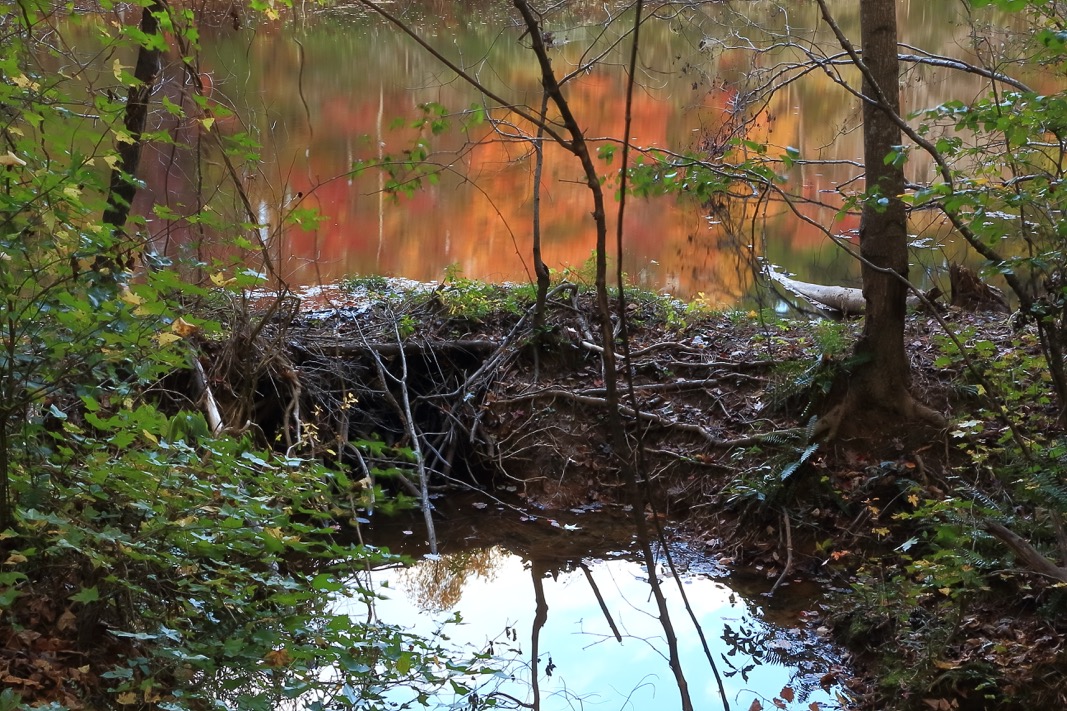Nature’s Engineers
December 3, 2020By Tom Poland
Back when I worked in wildlife cinematography, I tried to film the beavers on an old woodland pond back home. I’d get up before dark and hide in bushes. I never shot one frame of them. Wary, ever alert, beavers knew I was there. Beavers. You hear them more often than you see them. Cruising along with just their nose visible, much like a gator, they spot you. Pow! They slap their tough leather-like tail against the water alerting their brethren to the whereabouts of an interloper. And that tail, should you see one up close, is covered with natural patterns resembling roof shingles. Fish scales come to mind also.
Yes, it’s hard to sneak up on these secretive creatures, but evidence of their presence is irrefutable and to many landowners highly annoying. Beavers, nature’s engineers, chew and fell trees and drown others as their lodges raise water levels.
But? Is it all that bad? Do beavers provide environmental benefits? Read on.
Akin to rats, beavers are among the world’s largest living rodents. In early times trappers loved their thick fur. In Europe in the 1700s and 1800s a beaver top hat was a must have for the stylish man. Such hats went out of style for a dark reason. Men hunted and trapped Europe’s beavers into near extinction. Across the Atlantic Indians wore winter coats made of beaver fur. Sounds rather glitzy doesn’t it.

But nature’s engineers get after trees in a big way. Powerful jaws and strong, chisel-like teeth chew trees to a perfect point whereby the tree topples into water where it’s used to build lodges and dams, often changing the environment in ways few other animals can.
Chewing dense, living hardwood isn’t easy. How can their teeth endure such abuse? Iron is the answer. Beavers have long orange, think rusty, incisors that get their color from an iron-rich protective coating of enamel. Their teeth grow continuously throughout their life, but daily use keeps them in check. They’ll cut a big tree halfway through and wait for wind to do the rest. Tree-cutting rodents. That’s really something.
Okay, so beavers really do good things for the environment. Their dams store water that proves handy during droughts. Beaver dams’ fresh water wetlands provide happy-home habitat for birds, amphibians, and other animals. Their dams help with water quality and ground water recharge. But this coin has two sides.
Their dams can cause flooding, which saturates soil and makes roads, bridges, train trestles, and levees unstable. And few landowners like seeing hardwood stumps chewed to pencil-point perfection. And so the battle goes on.
Landowners, got beavers on your property? Want to be busy as a beaver? Try to get rid of them but check with your Department of Natural Resources first. Meanwhile beavers are busy as, well beavers. It’s a lot of work to keep a lodge/dam in top condition. And then there’s the family side of things. Beavers have a litter of kits late spring and early summer. After spending two years with their parents, they set out to—you guessed it—build dams and lodges of their own. You may get rid of your beavers, but leave it to beavers, the new kits on the block, to come your way yet again, and the cycle goes on anew.
Visit my website at www.tompoland.net
Email me at [email protected]















